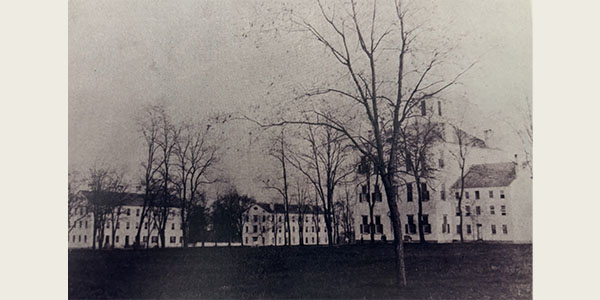Miami marks 200 years of teaching with panels on Nov. 1, Nov. 4
Sessions will be held at the art museum with a virtual component

Miami marks 200 years of teaching with panels on Nov. 1, Nov. 4
It is fitting, then, that six historians and educators will walk Miamians through those Days of Old – as well as the Days to Be – during a two-day celebration of the 200th anniversary of the first class taught at Miami.
“Days of Old, Days to Be: Miami Classes Begin a 3rd Century” will be held at 4 p.m. Nov. 1 and Nov. 4 at the Richard and Carole Cocks Art Museum. A virtual component also will be available for those who can’t attend in person. Hosted by Miami’s Institute for Learning in Retirement, there is no charge for members or nonmembers alike.
The theme for Nov. 1 is Envisioning “Old Miami in its Time” and features talks from Kate Rousmaniere, professor emerita of Educational Leadership; Curt Ellison, professor of History emeritus; and Nathan French, associate professor of Comparative Religion.
Nov. 4’s theme focuses on Rethinking “Old Miami” Today, with contributions from Jacqueline Johnson, university archivist; Helen Sheumaker, teaching professor of History and Global and Intercultural Studies; and Cameron Shriver, senior research associate for the Myaamia Center.
Ellison will introduce both panels.
“I hope people find it interesting and a way to think a little bit about what Miami was at its origin, what it is today, and why we need to think about that,” Ellison said.
Topics range from the importance of colleges and universities in the early 19th century to the role of religion at “Old Miami,” the university’s evolving relationship with the Miami Tribe of Oklahoma, and more.
In previous iterations of Miami’s history, the university was split between its time as “Old Miami” – which lasted until 1885 – and “New Miami,” everything after 1885.
Ellison was part of a team that worked on a 2009 book detailing Miami’s history for the university’s bicentennial. For that project, the “New Miami” era ended in 1941 and was followed by three additional periods – “National University” from 1941-1970; “Public Ivy” from 1970-1996; and finally “Corporate University.”
“The university we know today is basically a post-World War II invention,” Ellison said. “It was a very small place prior to World War II.
“What I used to say to students was that if you were a student or a faculty member at the center of any era on this campus, and you were suddenly transported into another era, the only thing you might recognize would be some of the buildings. Everything would have a quite different feel to it.”